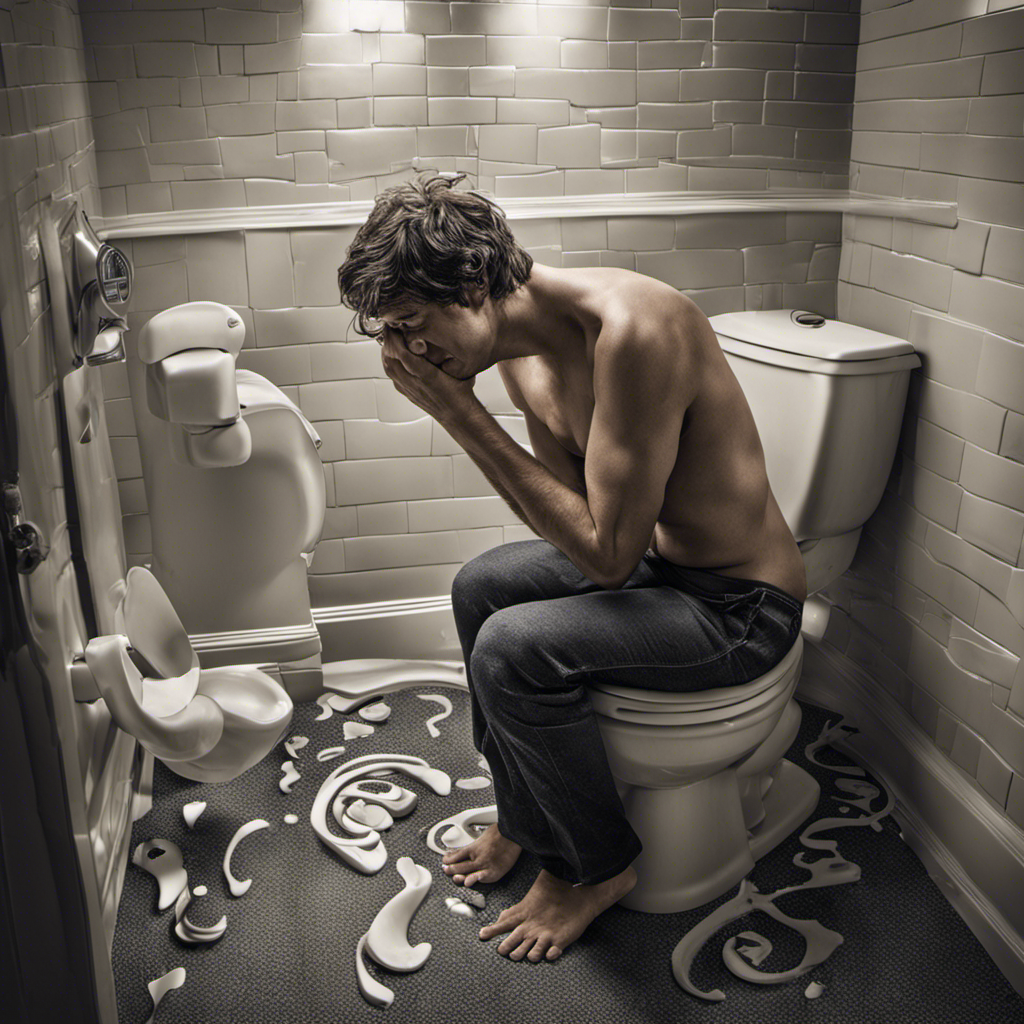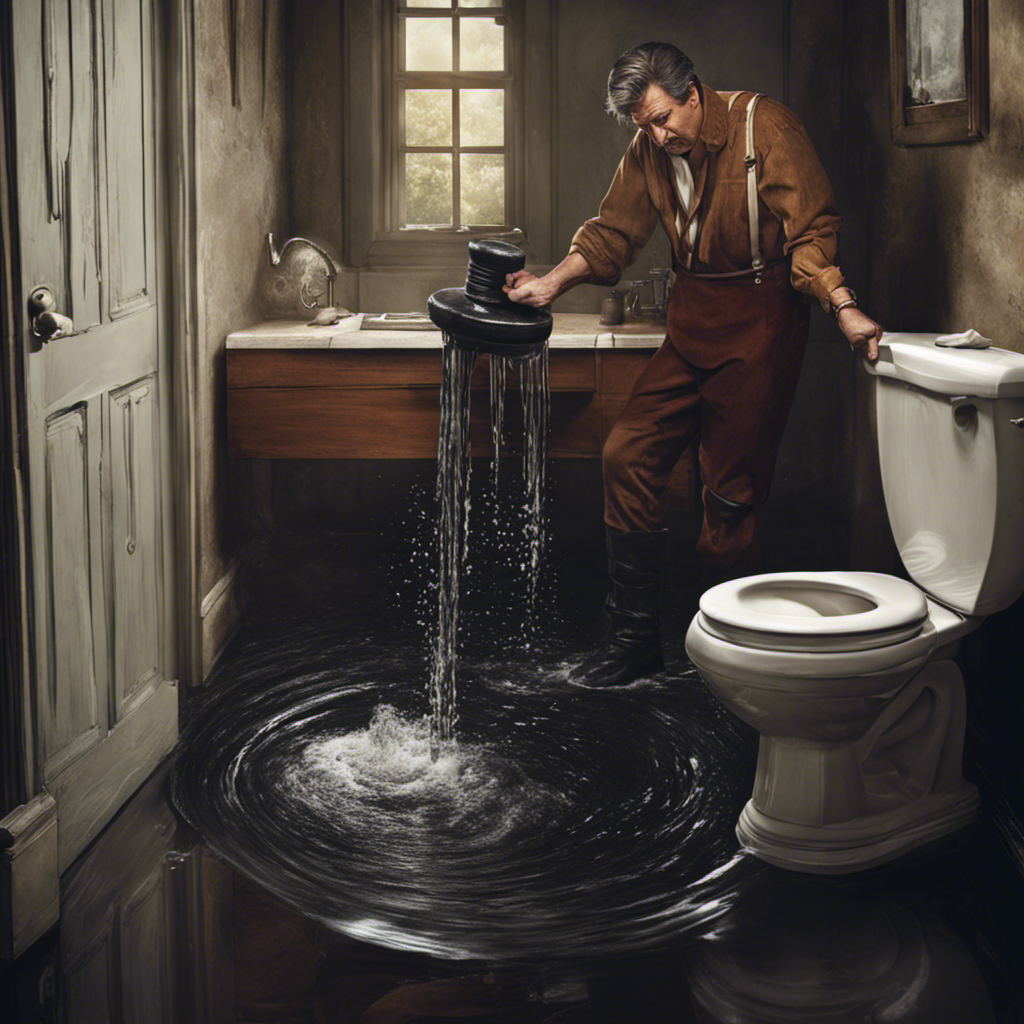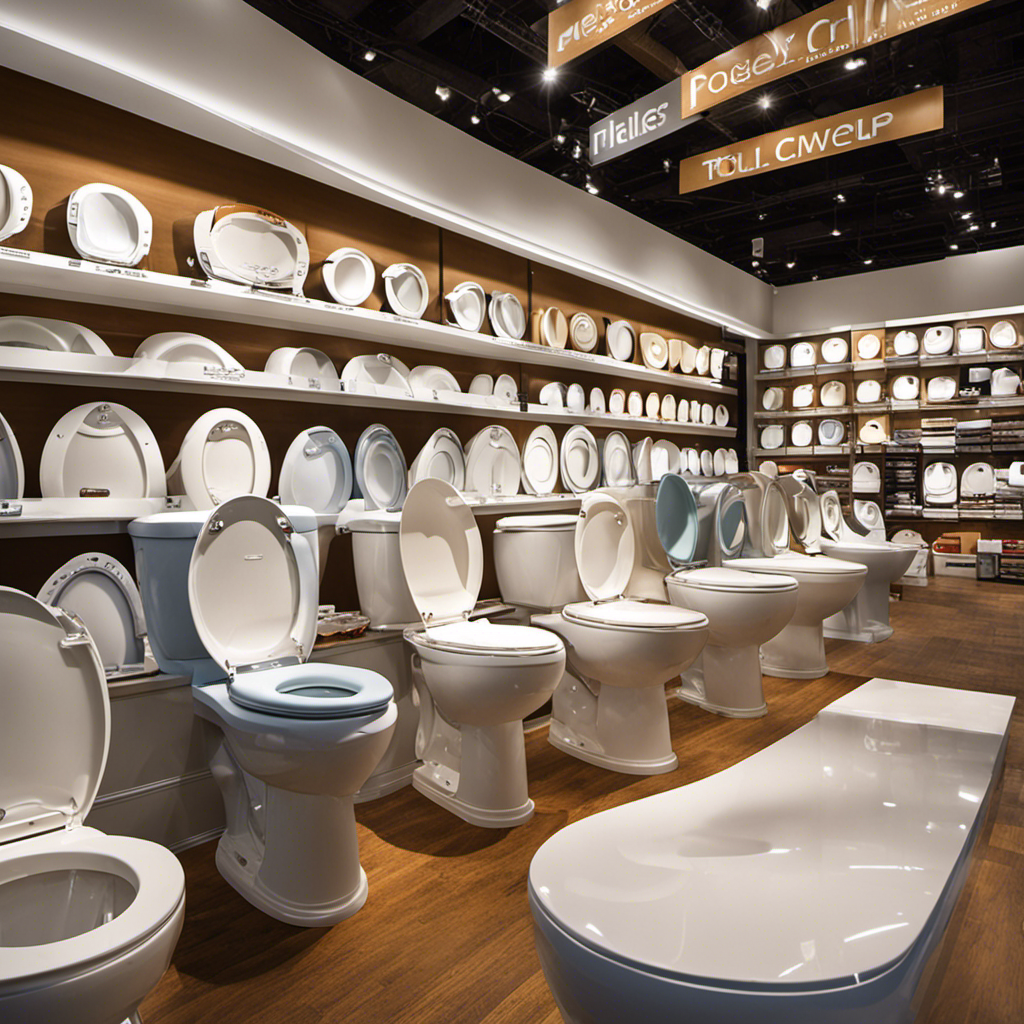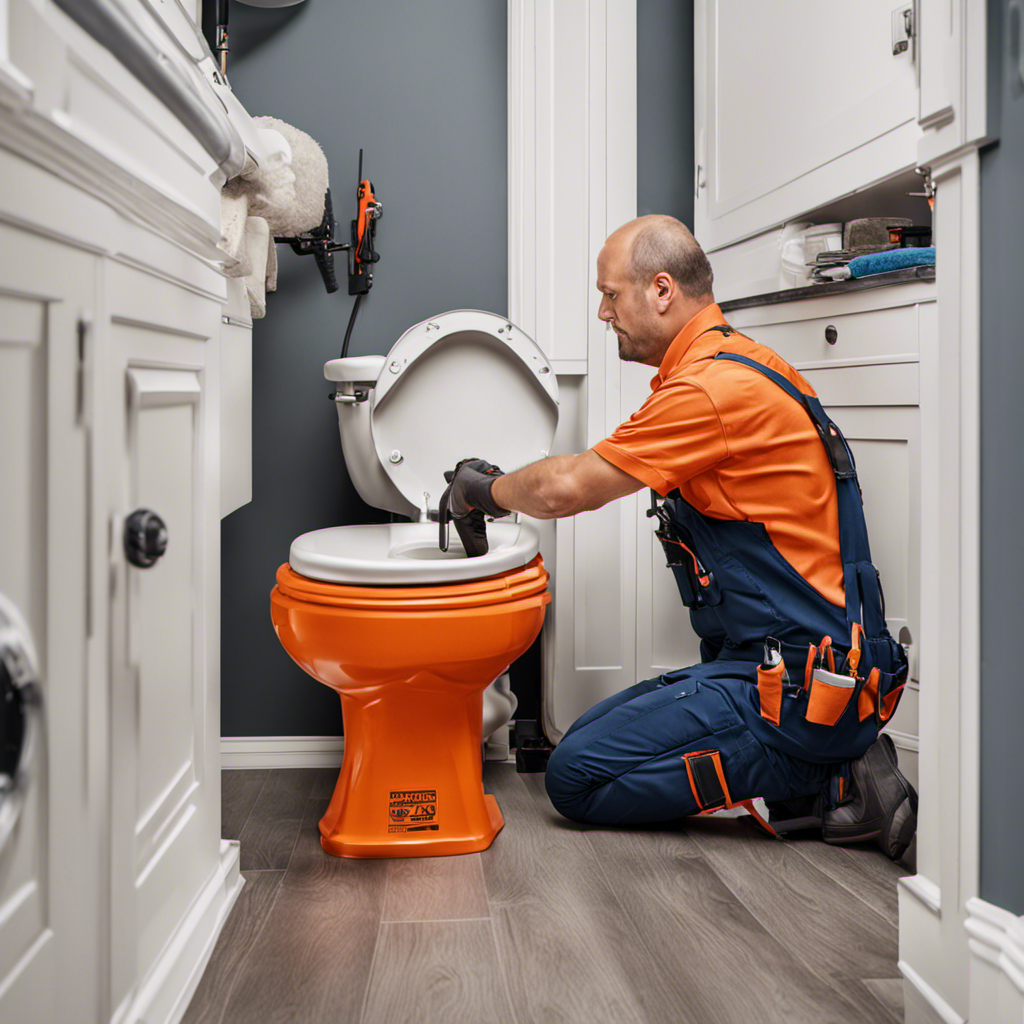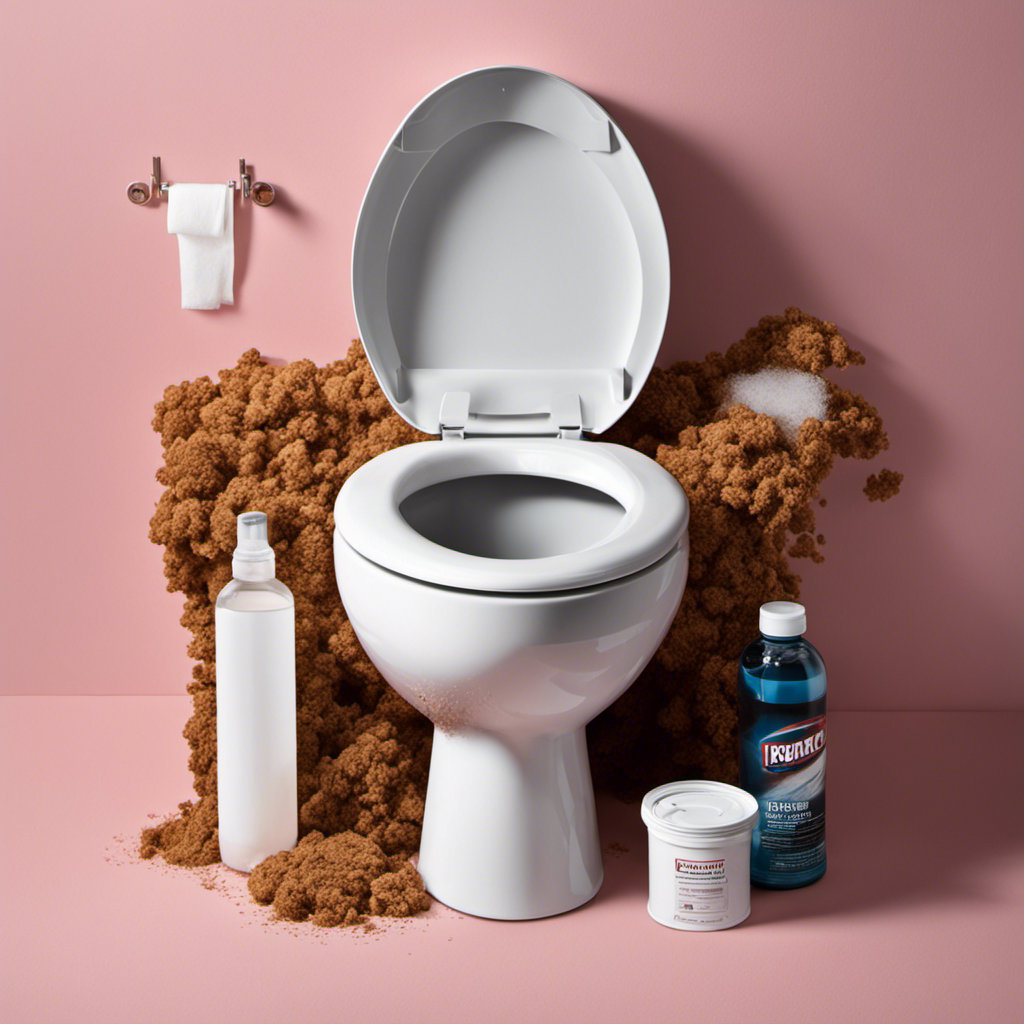Have you ever wondered why your toilet won’t flush? Well, I’ve got the answers you’re looking for.
In this article, I’ll walk you through the common reasons why toilets fail to flush and provide you with troubleshooting steps to fix the problem.
We’ll delve into the inner workings of the flush mechanism and discuss preventive measures to maintain a healthy flushing system.
So, buckle up and get ready to become a toilet troubleshooting pro!
Key Takeaways
- Common reasons for a toilet not flushing include clogs in the pipes and accumulation of toilet paper or foreign objects.
- Insufficient water pressure can affect the flushing mechanism, resulting in a weak or incomplete flush.
- Troubleshooting steps include checking the water supply, inspecting the flapper valve, and regularly maintaining the water supply and flapper valve.
- To fix a clogged toilet, you can use a plunger or a toilet auger. If all else fails, it is recommended to seek professional plumbing help.
Common Reasons for a Toilet Not Flushing
One common reason why your toilet won’t flush is if there’s a clog in the pipes. When there is a clog, it restricts the flow of water from the toilet bowl to the sewage system, causing the flush to be ineffective. This can happen due to various reasons, such as an accumulation of toilet paper, foreign objects, or even mineral deposits.
Another factor that can affect the flushing mechanism is insufficient water pressure. If the water pressure is low, it may not provide enough force for a complete flush.
To troubleshoot a flushing problem, it is important to first identify the cause. By understanding the common reasons behind a toilet not flushing, you can take appropriate measures to resolve the issue and restore the functionality of your toilet.
How to Troubleshoot a Flushing Problem
To troubleshoot a flushing problem, you can start by checking the water supply and the flapper valve.
First, ensure that the water supply to the toilet is fully turned on. Low water pressure can cause weak flushes or incomplete flushing.
If the water supply is fine, the next step is to inspect the flapper valve. This rubber flap at the bottom of the tank is responsible for releasing water into the bowl during a flush. Over time, it can become worn or misaligned, resulting in a poor flush. Check if the flapper valve is closing properly and if it needs to be replaced.
Regular toilet maintenance is crucial to prevent water pressure issues and other flushing problems. By regularly inspecting and maintaining the water supply and flapper valve, you can ensure a proper flush every time.
Steps to Fix a Clogged Toilet
If your toilet is clogged, you can try using a plunger to clear the blockage. Here are three steps to fix a clogged toilet:
-
Use a plunger: Place the plunger over the drain hole and create a seal. Push and pull the plunger vigorously to create suction and dislodge the clog.
-
Use a toilet auger: If the plunger doesn’t work, a toilet auger can help. Insert the auger into the drain hole and crank the handle to break up the clog.
-
Call a professional plumber: If all else fails, it may be best to seek professional plumbing help. A trained plumber has the expertise and tools to handle more complex clogs and ensure proper toilet maintenance.
Understanding the role of the flush mechanism is crucial in troubleshooting toilet flushing problems.
Understanding the Role of the Flush Mechanism
Understanding how the flush mechanism works is important for troubleshooting toilet flushing issues. The flush mechanism is responsible for releasing water from the toilet tank into the bowl, creating the necessary force to remove waste. It consists of several components, including the toilet flush handle and the toilet tank water level.
The toilet flush handle is the part we use to initiate the flushing process. When we push or pull the handle, it activates a chain or lever that lifts the flapper or flush valve at the bottom of the tank. This allows water to flow from the tank into the bowl, flushing away waste.
The toilet tank water level plays a crucial role in the flushing process. It should be set at the correct height to ensure an effective flush. If the water level is too low, there may not be enough force to remove all the waste. On the other hand, if the water level is too high, it may result in an inefficient flush or even cause water to overflow from the tank.
To further understand the relationship between the toilet flush handle and the toilet tank water level, refer to the table below:
| Toilet Flush Handle | Toilet Tank Water Level |
|---|---|
| Push | Increase |
| Pull | Decrease |
| Hold | Maintain |
| Release | Stabilize |
Preventive Measures for a Healthy Flushing System
Maintaining a healthy flushing system requires regular maintenance and proper usage of your toilet. Here are three preventive measures that can ensure the optimal functioning of your toilet:
-
Clean the toilet bowl regularly: Use a toilet brush and mild cleaner to remove any buildup or stains in the bowl. This will prevent clogs and keep the flushing mechanism working smoothly.
-
Avoid flushing non-flushable items: Only flush toilet paper and human waste down the toilet. Flushing items like diapers, wipes, or feminine hygiene products can lead to clogs and damage the flushing mechanism.
-
Check the water level in the tank: Ensure that the water level in the tank is at the recommended level. If it is too low, adjust the float valve to increase the water level. If it is too high, adjust the float valve to decrease the water level. This will help maintain proper flushing power.
Conclusion
In conclusion, troubleshooting and fixing a toilet that won’t flush can be a simple task if you follow the right steps. By understanding the common reasons for a flushing problem and knowing how to properly handle a clog, you can easily restore your toilet’s functionality.
However, some may argue that preventive measures are too time-consuming and unnecessary. But remember, taking the time to maintain a healthy flushing system can save you from future headaches and costly repairs.
So, don’t neglect the importance of regular maintenance and keep your toilet flushing smoothly.
